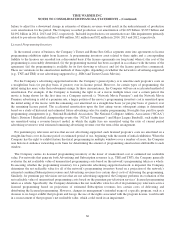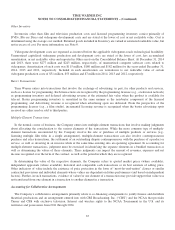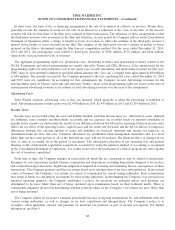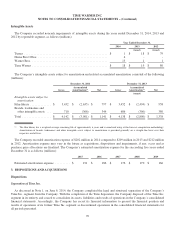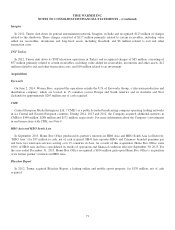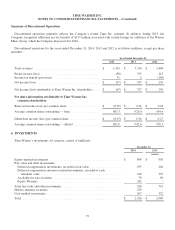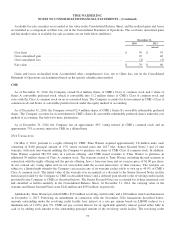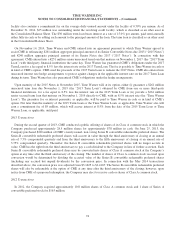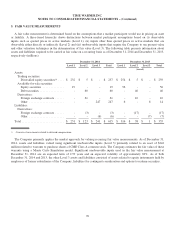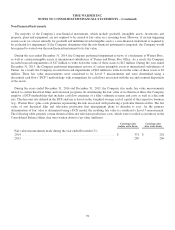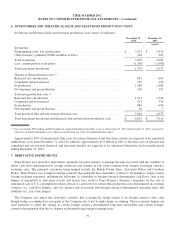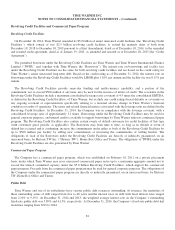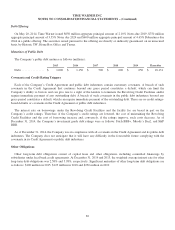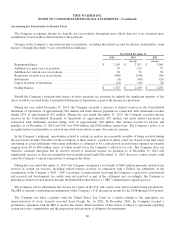Time Magazine 2014 Annual Report Download - page 92
Download and view the complete annual report
Please find page 92 of the 2014 Time Magazine annual report below. You can navigate through the pages in the report by either clicking on the pages listed below, or by using the keyword search tool below to find specific information within the annual report.
TIME WARNER INC.
NOTES TO CONSOLIDATED FINANCIAL STATEMENTS – (Continued)
5. FAIR VALUE MEASUREMENTS
A fair value measurement is determined based on the assumptions that a market participant would use in pricing an asset
or liability. A three-tiered hierarchy draws distinctions between market participant assumptions based on (i) observable
inputs such as quoted prices in active markets (Level 1), (ii) inputs other than quoted prices in active markets that are
observable either directly or indirectly (Level 2) and (iii) unobservable inputs that require the Company to use present value
and other valuation techniques in the determination of fair value (Level 3). The following table presents information about
assets and liabilities required to be carried at fair value on a recurring basis as of December 31, 2014 and December 31, 2013,
respectively (millions):
December 31, 2014 December 31, 2013
Level 1 Level 2 Level 3 Total Level 1 Level 2 Level 3 Total
(recast)
Assets:
Trading securities:
Diversified equity securities(a) .... $ 232 $ 5 $ - $ 237 $ 254 $ 5 $ - $ 259
Available-for-sale securities:
Equity securities .............. 19 - - 19 56 - - 56
Debt securities ................ - 60 - 60 - 40 - 40
Derivatives:
Foreign exchange contracts ...... - 61 - 61 - 10 - 10
Other ....................... - - 247 247 6 - 8 14
Liabilities:
Derivatives:
Foreign exchange contracts ...... - (3) - (3) - (17) - (17)
Other ....................... - - (6) (6) - - (7) (7)
Total ............................ $ 251 $ 123 $ 241 $ 615 $ 316 $ 38 $ 1 $ 355
(a) Consists of investments related to deferred compensation.
The Company primarily applies the market approach for valuing recurring fair value measurements. As of December 31,
2014, assets and liabilities valued using significant unobservable inputs (Level 3) primarily related to an asset of $242
million related to warrants to purchase shares of CME Class A common stock. The Company estimates the fair value of these
warrants using a Monte Carlo Simulation model. Significant unobservable inputs used in the fair value measurement at
December 31, 2014 are an expected term of 2.59 years and an expected volatility of approximately 82%. As of both
December 31, 2014 and 2013, the other Level 3 assets and liabilities consisted of assets related to equity instruments held by
employees of former subsidiaries of the Company, liabilities for contingent consideration and options to redeem securities.
76


